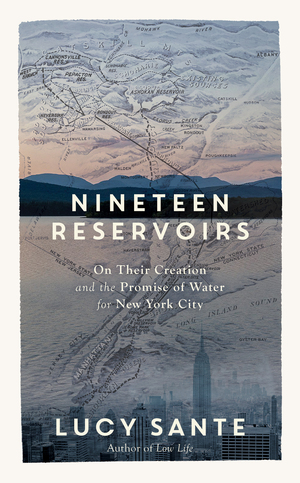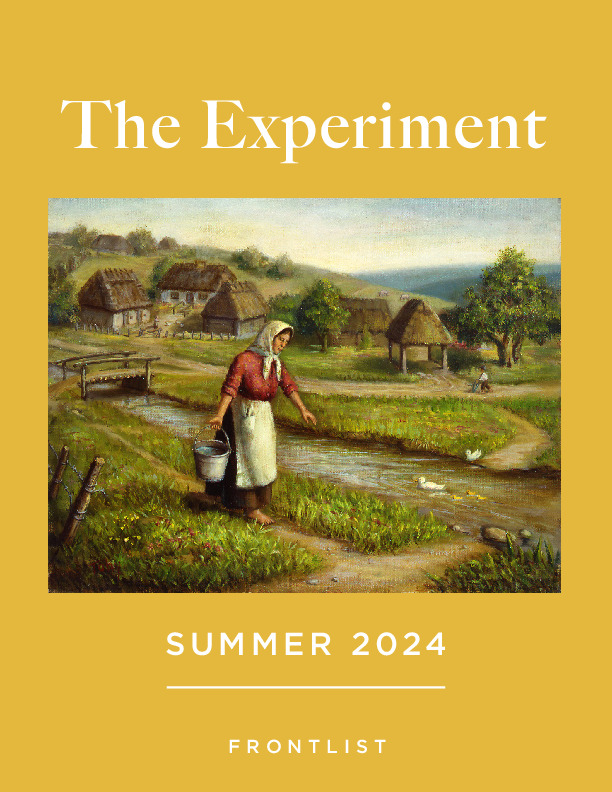 Download Hi-Res Cover
Media/Desk Copy Request
Download Hi-Res Cover
Media/Desk Copy Request
Without the nineteen upstate reservoirs that supply its water, New York City as we know it would not exist today.
“[Sante] is an endlessly curious writer with a sharp wit and an elegant prose style . . . As a physical object, the book is a stunner, loaded with maps, archival stills of the construction process, vintage postcards, and ads warning New Yorkers to check their plumbing and ‘stop that leak!’”—The Wall Street Journal
From 1907 to 1967, a network of reservoirs and aqueducts was built across more than one million acres in upstate New York, including Greene, Delaware, Sullivan, and Ulster Counties. This feat of engineering served to meet New York City’s ever-increasing need for water, sustaining its inhabitants and cementing it as a center of industry. West of the Hudson, it meant that twenty-six villages, with their farms, forest lands, orchards, and quarries, were bought for a fraction of their value, demolished, and submerged, profoundly altering ecosystems in ways we will never fully appreciate.
This paradox of victory and loss is at the heart of Nineteen Reservoirs, Lucy Sante’s meticulous account of how New York City secured its seemingly limitless fresh water supply, and why it cannot be taken for granted. In inimitable form, Sante plumbs the historical record to surface forgotten archives and images, bringing lost places back to life on the page. Her immaculately calibrated sensitivity honors both perspectives on New York City’s reservoir system and helps us understand the full import of its creation.
An essential history of the New York City region that will reverberate far beyond it, Nineteen Reservoirs examines universal divisions in our resources and priorities—between urban and rural, rich and poor, human needs and animal habitats. This is an unmissable account of triumph, tragedy, and unintended consequences.
With 29 present-day photographs by Tim Davis
★ A Washington Post Best Nonfiction Book of 2022
An Indie Bestseller
“[Sante] is an endlessly curious writer with a sharp wit and an elegant prose style . . . As a physical object, the book is a stunner, loaded with maps, archival stills of the construction process, vintage postcards, and ads warning New Yorkers to check their plumbing and ‘stop that leak!’”—The Wall Street Journal
“An eye-opening tale of the greed and corruption but also diplomacy and ingenuity involved in creating the system now taken for granted.”—The Washington Post, Best Nonfiction Book of 2022
“I would recommend Nineteen Reservoirs.”—Darryl Pinckney, Vanity Fair
“Lucy Sante’s book is both an ode to a lost world and a celebration of an achievement that is a marvel of engineering. The conflict between urban and rural, rich and poor, is poignant without becoming melodramatic, a tribute to Sante’s fine prose, archival pictures, and the present-day photos taken by Tim Davis. The publisher also deserves credit for producing such a beautiful and well-designed volume.”–Graydon Carter’s Air Mail
“[The] larger underlying subject, typical of this author, has less to do with the intrusion of a quasi-military bully than with the way the more or less effaced past continues to haunt the oblivious march of progress. . . . Sante has performed a valuable service in raising hard questions about [the reservoir system’s] mixed legacy.”—Phillip Lopate, The New York Review of Books
“The prose is crystalline and the pages are richly illuminated with maps, adverts, and period photography. . . . The visual matter serves to further accentuate the intractable issue at the heart of this book: how to help an urban population without utterly destroying a rural one.”—Chicago Reader
“[A] rewarding study [of] the history of New York City’s reservoirs and the displacement that followed the city’s increasing demand for water . . . well-crafted prose, rich archival illustrations, and eye-catching photographs of the reservoirs make this memorable. The chronicle is anything but dry.”—Publishers Weekly
“Lucy Sante is an essential guide into the underreported history of cities around the world. For her new book, Nineteen Reservoirs, she explores something that you might not have thought about prior to now: at what cost did New York City get its supply of fresh water? It’s a fascinating look at the effect this process had on the Hudson River Valley and the communities based there, then and now.”—InsideHook
“A meditation, a forensic accounting of the damage the reservoir system did and how it still resonates. Sante is expert in the excavation of neglected and buried histories.”—The New Republic




